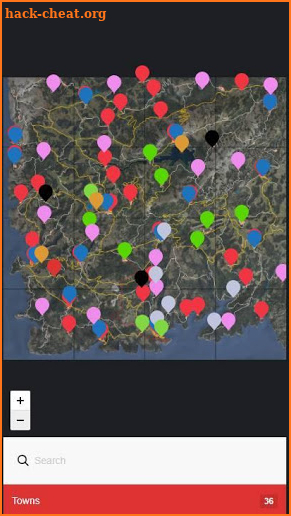

They test it, then rearrange the DNA letters and request more samples until they come up with a unique-smelling oil that could be reproduced synthetically for half the cost of traditional oils.

Within two to six weeks, they receive a vial with a liquid DNA sample by mail.
Scum map biology code#
Ginkgo’s executives request the gene code for the oil from an outside provider. The plant is hard to grow, produces very little oil per plant, and is increasingly in short supply. Take rose oil, for instance, which is used for perfumes. Says CEO and cofounder Jason Kelly: “Things have really accelerated in just the past two years.” Fueled by $154 million from investors, Ginkgo recently opened its second “foundry,” an 18,000-square-foot factory stocked with fermentation tanks, mass spectrometers, software, robots, and traditional bench biology tools to design, build, and test DNA. In Boston, Ginkgo Bioworks churns out organisms used for new perfume fragrances and food sweeteners, using DNA code from hard-to-grow plants and extinct flowers. Today the industry believes it has better tools for editing, measuring results, and automating the way chemicals and microorganisms are produced in large quantities.Ī flurry of innovation is underway. This time synthetic biology companies are focusing on materials-proponents assert they have higher margins and fewer market fluctuations than fuels-and specialty chemicals. When oil prices fell, several of the startups failed. But microorganisms behaved differently in factory settings, it turned out, than in labs. In 2008 some startups promised to use synthetic biology to produce biofuels from pond scum.

One need look back only a few years for a sobering reminder. Of course, more than a dollop of caution is in order. The highly touted Crispr tool, for instance, can snip DNA sequences and insert desired features, while technology from startup Twist Bioscience speeds up gene synthesis by miniaturizing the chemical reaction on silicon. In the past few years new robotics, computational biology, and gene-editing and gene-synthesis technologies have emerged to make synthetic biology efficient and cost-effective. The commercialization of DNA sequencing (the reading of an organism’s code) and synthesis (the writing of that code) has accelerated since the mapping of the human genome was completed in 2003. DNA, made up of four nucleotide molecules in a sequence, is a code that can be edited and written-not unlike software. There’s a reason the Silicon Valley stars are drawn to synthetic biology. That’s double the amount from 2014, according to SynBioBeta, a consulting firm that tracks the industry. Last year synthetic biology companies nabbed $1 billion from investors, including tech names like Peter Thiel, Eric Schmidt, Marc Andreessen, Max Levchin, and Jerry Yang. (Eventually, Bolt hopes to produce its own branded clothing.) If the company succeeds, the development will be a key marker for the emerging field called synthetic biology.īolt is only one startup using such technologies, which let scientists reengineer the genetics of living organisms to make products ranging from food sweeteners to “leather” to woodlike composites. This month Bolt will undertake a make-or-break challenge: expanding its lab-size process into a commercial-scale operation for three customers, including the apparel company Patagonia. As Widmaier puts it, the new material “has massive potential to change the world for the better.” By contrast, Bolt’s fabric will be biodegradable, the company says. Most textiles today are made from petroleum-based polyester, which is harmful to the environment when disposed of. “This is a new era of materials,” says Dan Widmaier, Bolt’s CEO.


 0 kommentar(er)
0 kommentar(er)
